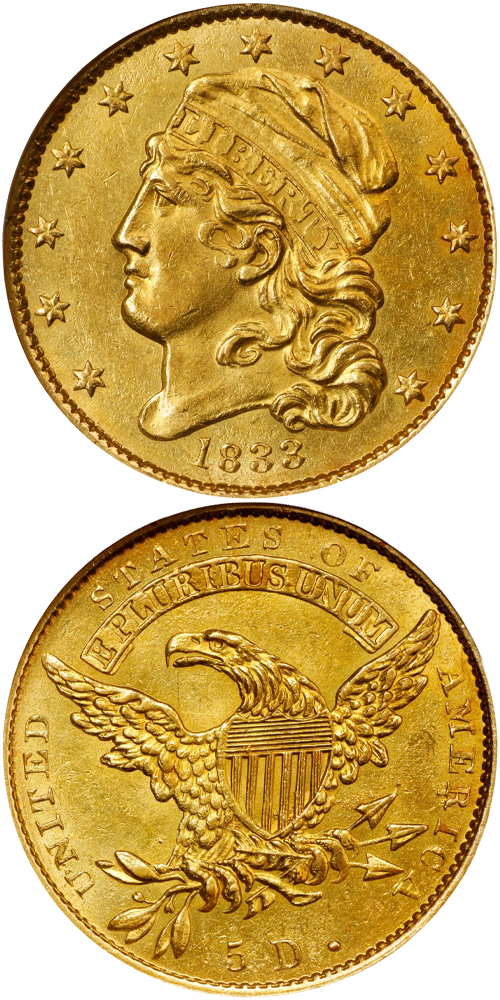1833 Capped Head Left Half Eagle
Large Date
Until 1829, all gold coins were struck using a press that employed an open collar. In that year, the Philadelphia Mint introduced a press with a close collar that could also impart edge reeding. This innovation allowed coins to be struck at a consistent and slightly smaller diameter. At the same time, more half eagles were produced than in previous years, with 193,630 half eagles of all varieties minted in 1833, nearly all which were shipped overseas, melted, and thus lost forever. There are two prominent varieties: the Large Date, and the Small Date, both of approximately equal rarity. All of the Large Date pieces were struck from a single die pair, BD-1, with the numerals in the date widely spaced. All Capped Head Left half eagles are well known rarities. Virtually the entire mintage of 1833 half eagles went overseas and was melted. The coins were valued as bullion only. The face value was irrelevant. On June 28, 1834, Congress took action by reducing the fineness as well as the weight of all gold coins. The new coins circulated widely. Meanwhile the few remaining "old tenor" (as they were called) half eagles were withdrawn gradually from circulation by the Mint for recoining into "new tenor" Classic Head half eagles. The inclusion of any Capped Head Left half eagle in a collection is a mark of achievement.
The example to the left was sold by Stack's Bowers Galleries in the D. Brent Pogue Part IV Auction, where it realized $1,351,250.






